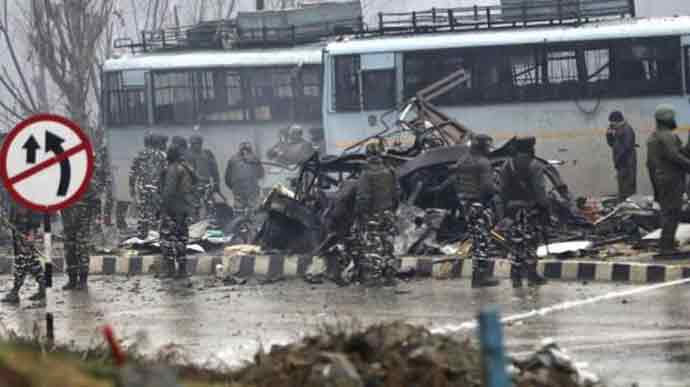Pulwama attack: As talks of retribution fly thick and fast, troubling questions are unanswered

Blood and gore visited the newsroom once again. Close to 40 CRPF jawans were martyred in a deadly suicide attack in militancy-hit Pulwama of restive South Kashmir. In the afternoon, as a massive CRPF convoy was on its way from Jammu to Srinagar, an SUV reportedly laden with over 300 kg of explosives rammed one of the buses near Awantipora. It was carrying Jawans from the 76th Battalion of the CRPF.
The driver of the explosive vehicle, Adil Ahmad Dar, was apparently a Pulwama local. A school drop-out and a mason by profession, Dar went missing from his house on the 19th of March, 2018. His family lodged a complaint in this regard at the Kakapora police station on March 23, 2018. It later emerged that he had joined the Jaish-e-Mohammed (JeM), a Pakistan-based terrorist group led by Maulana Masood Azhar of IC-814 fame. In less than a year, Adil Ahmad Dar had become a fidayeen and carried out the worst ever terrorist strike on security forces in the Valley.
The JeM was almost decimated during late 2017-early 2018. The group made a stunning recovery with a slew of local recruitment — mostly in South Kashmir. Intel estimates suggest that as many as 50 locals from Pulwama joined militancy in 2018.

These developments probably mean that the LeT and JeM are combining.
JeM never had the monetary clout or the logistics to carry out spectacular terror attacks — that has certainly changed. JeM did apparently change its strategies too. Instead of sending recruits to PoK for training, JeM brought in trainers from Pakistan. According to SSP Pulwama Mohd Aslam, as of July 2018, there were 15 Pakistani JeM terrorists in Pulwama district — and three of them were IED experts.
In January 2019, reports emerged that Jaish chief Maulana Masood Azhar had despatched an Afghan war veteran, Abdul Rasheed Ghazi, a highly trained war and IED expert, ostensibly to Kashmir to avenge the killing of his nephews Talha and Usman.
Intel sources suggested that Ghazi crossed over by December 9, 2018, and probably reached Pulwama by month-end.

There was no major fidayeen strike in 2018 and certainly no spectacular attack on convoys. That comfort zone is gone.
Fidayeen attacks are demoralising. They leave one feeling helpless. But a few troubling questions remain unanswered. Why was such a large-scale relocation happening in a terrorist-prone area? Was the road opening party (ROP) negligent? How did a rogue SUV find its way into a sensitised route? Were standard operating procedures (SOPs) flouted? Did someone act complacently? Is assembling a 300 kg-plus car bomb that easy in South Kashmir? Lastly, is local support for militancy growing in the Valley?
In hindsight, it looked like a big strike was coming. The slew of grenade attacks against security force personnel in the last couple of months came with continuous inputs suggesting something big may be coming soon. However, time and place are always difficult to pin on intelligence reports and seemingly unconnected facets, like the arrest of three Rashtriya Rifles Jawans over the killing of fellow soldier Aurangzeb, lend an altogether different dimension to the ground situation in the Valley.
As talks of retribution fly thick and fast, a thorough investigation is needed into the lapses, if any, and on the overall circumstances and chain of events leading to this monumental tragedy.

